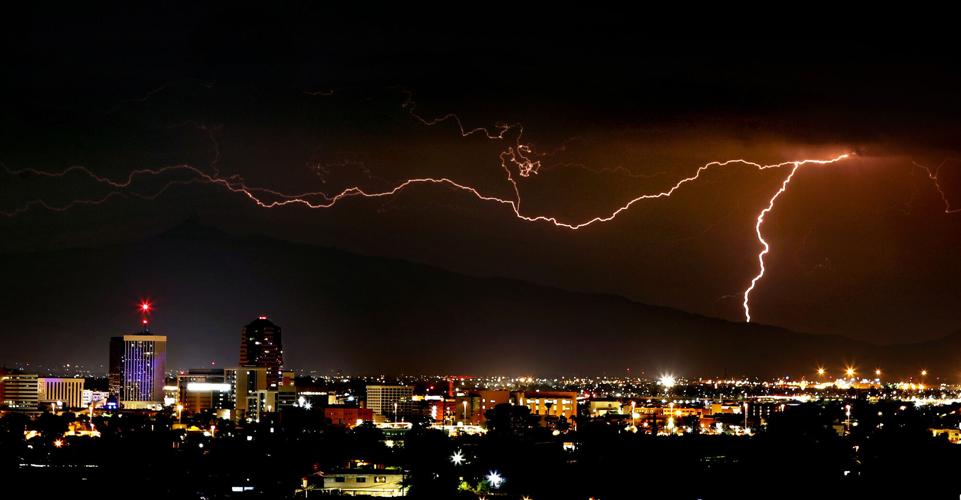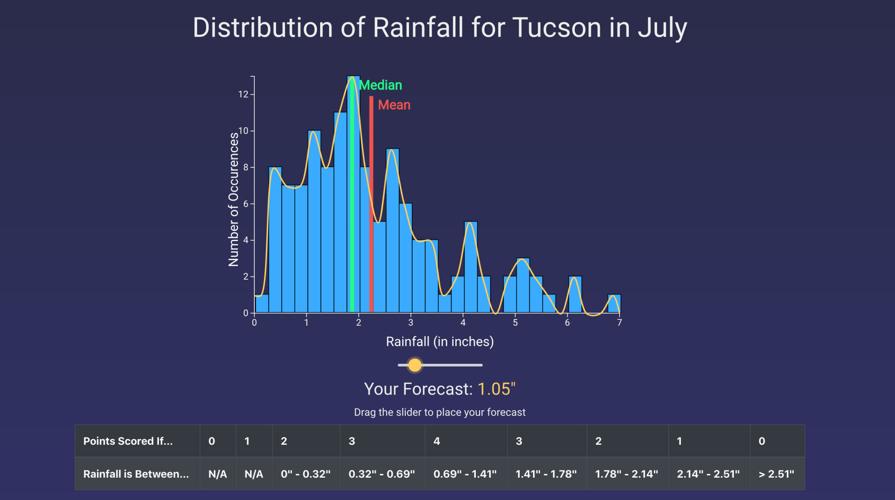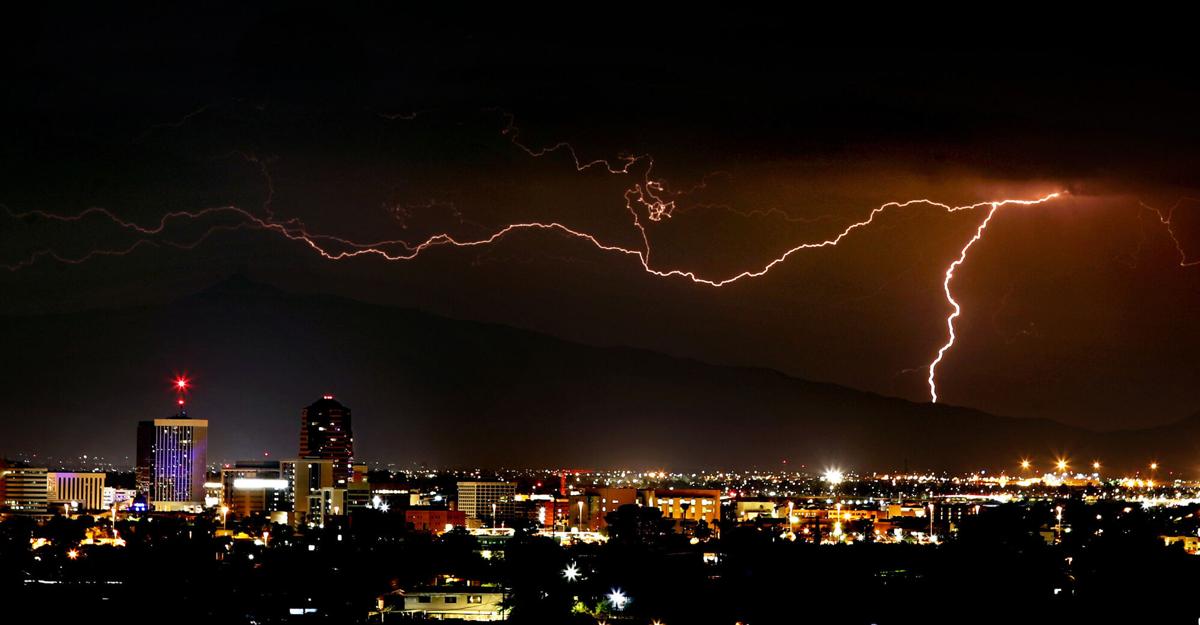Do you think we’re in for another lousy monsoon season? Care to bet on that?
Now you can, thanks to a fantasy-sports-style game designed by a team of researchers from the University of Arizona.
The Southwest Monsoon Fantasy Forecasts contest allows amateurs and professionals alike to compete for the title of this season’s climate handicapping champion.
Starting with July, competitors will predict monthly rainfall totals in the Southwest monsoon hot spots of Tucson, Phoenix, Flagstaff, Albuquerque and El Paso. They will be awarded points based on the riskiness and accuracy of their predictions.
The competitors with the two highest scores by Sept. 30, the official end of summer thunderstorm season, will receive a prize: an automated backyard weather station valued at $400.
The online game was designed by UA climatologist Michael Crimmins and researchers Zack Guido, Ben McMahon and Rey Granillo from the Arizona Institutes for Resilience.
Guido, who is the principal investigator for the project, said it is designed to tap into people’s fascination with the monsoon while promoting climate awareness and testing the forecasting skills of the general public.
“The most common climate question I am asked in June is ‘What’s the monsoon going to be like this year?’” said Guido in a written statement. “Every single year, it’s the climate phenomenon that captivates people in the Southwest.”

Southwest Monsoon Fantasy Forecasts game
And even professional forecasters sometimes fail to get it right.
“Everyone is kind of interested in predictions, but none of them are good,” Guido said. “This is for a whole bunch of reasons, but mostly because the monsoon is a complicated phenomenon that makes our scientific ability to predict it really low. It’s really not better than flipping a coin.”
Crimmins insists the contest is not meant to trivialize something he said is “critically important to our ecosystem, agriculture and more.” Instead, he said in the statement: “I like to think of the fantasy monsoon (game) as an outlet for our stress and an expression of our reverence surrounding this time of year.”
The competition is open to anyone. Participants just have to log in to the contest website — monsoonfantasy.arizona.edu — and complete a short questionnaire about their monsoon experience before making their predictions.
Entries are due a week before the start of each month so players can’t take unfair advantage of the latest seven-day forecasts.
The bolder the prediction, the greater the possible reward. For example, someone who correctly guesses that Tucson will get 200% of its average rainfall in July would get more points than someone who accurately predicts normal precipitation.
“It’s like betting on the underdog,” Guido said.
And if you somehow manage to hit the number exactly, you get all the points.
“It’s exceedingly unlikely you’ll get a perfect guess, so our accuracy scoring is tiered,” Guido said. “The closer your estimated forecast is to reality, the more points you get.”
Monsoon season officially runs from June 15 through Sept. 30. Last year was the driest monsoon on record across the Southwest, pushing Tucson to its lowest annual rainfall total on record — a paltry 4.17 inches.
Crimmins said it is unlikely that the region will experience two extremely bad years in a row, so he is predicting a swing back toward normal this season. But even the official outlook by the National Weather Service’s Climate Prediction Center is little more than “a scientific shrug at this point,” he said.
Crimmins and the so-called experts give equal chances that this year’s monsoon rainfall will be above, at or below the historical average of 6.08 inches.
“It’s so humbling how we just don’t totally get the monsoon. The forecasting is so hard, and I don’t even know how it can get better,” Crimmins said. “That’s why the Monsoon Fantasy game is so cool. It’s more like a test of people’s emotional state and hopefulness.”
An August, 2020, heatwave continued into a second week in Tucson and throughout Arizona. Tucson broke a record with a high temperature of 111-degrees. Most days bounce around from 106-109, with little monsoon rain to cool the afternoons. Video by Josh Galemore / Arizona Daily Star






